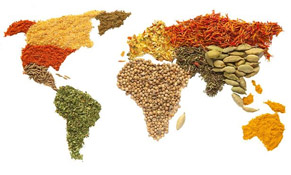Nutrition and Health Sciences, Department of

NUTR/GLST 498b: Global Research Experiences in Nutrition and Health
Date of this Version
2020
Document Type
Presentation
Citation
Poster presented for NUTR 498b: Global Research Experiences in Nutrition, University of Nebraska-Lincoln, Spring 2020.
Abstract
PURPOSE: To examine the relationship between iron-deficient anemia and malaria in primary school children in Southern Ethiopia and Zambia and assess the correlation between diet and health status.
METHODS: Market inventories, observations at health outposts, and interviews and anthropometric assessments of 6th and 7th grade students.
RESULTS: Both Ethiopia and Zambia had 20 iron-rich foods available in local markets. Only liver consumption was associated with malaria experience; those who consumed liver were significantly less likely to have had the disease (p
DISCUSSION: Given the high prevalence of malaria in Southern Ethiopia and Zambia, and the correlation between liver consumption and malaria experience, nutrition education concerning iron-rich foods is essential.
Included in
International and Community Nutrition Commons, Other Food Science Commons, Public Health Commons


Comments
Copyright (c) 2020 Julianne Fay